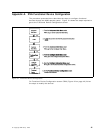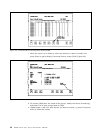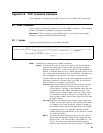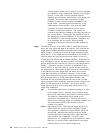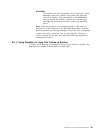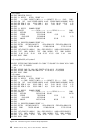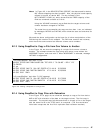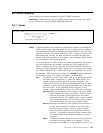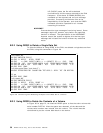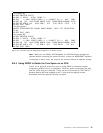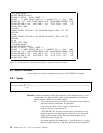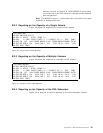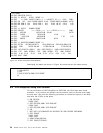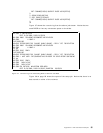
ixfp snap,80e(dsn=′ test.data.1′):80f(1000),noprompt
AR 0015 IXFP22I SNAP TO CUU= 80F STARTED AT 18:52:48 11/17/1998
AR 0015 IXFP20I SNAP FUNCTION COMPLETED AT 18:52:48 11/17/1998
AR 0015 1I40I READY
ixfp snap,80e(dsn=′ test.data.2′):80f(2000),noprompt
AR 0015 IXFP25I VTOC ERROR DURING WRITEANY PROCESSING RC=′10′ ON DEVICE=80F
AR 0015 1I40I READY
Figure 27. Making a SnapShot with Relocation
B.1.5 Other Uses of SnapShot
In this section we present some other uses of SnapShot in a VSE/ESA
environment.
B.1.5.1 Creating a Test Copy of a VSE/ESA System
SnapShot can be used to make a copy of VSE/ESA system-resident volumes for
use in testing new applications in another LPAR. Before taking the snap copy of
DOSRES and SYSWK1, however, you need to be sure that all open files on these
volumes have been closed. An example of this would be the shutting down of
CICS. After DOSRES and SYSWK1 have been snapped, the target volumes could
be reassigned from the production LPAR and reallocated to the test LPAR. You
now have an exact copy of the production system′s DOSRES and SYSWK1.
B.1.5.2 Copying Data from a Production Virtual Machine to a Test
System
IXFP/SnapShot for VSE/ESA can be used to copy selected volumes from the
production virtual machine to the test LPAR, using the procedure in B.1.5.1,
“Creating a Test Copy of a VSE/ESA System.” The difference here is that we
have a functioning VSE/ESA system already running in the test virtual machine
and now want to provide updated data to it.
An example would be that the production virtual machine has access to the full
range of device addresses for the RVA—while the test virtual machine has a
subset of those addresses. The addresses of the test virtual machine would be
in a DVCDN condition to the production virtual machine and thus are available
as a target.
In this case, the production data would be quiesced to ensure that all updates
were completed. SnapShot would be invoked to copy the selected volumes to
addresses accessible by the test virtual machine. The volumes would be made
available again to the production virtual machine.
The test partition would then be able to use a current copy of live data for testing
of new or revised applications.
Notes: The same process could be used for a data warehousing application
where there is no need for up-to-the-minute information, but the full set of
data is required to be in the warehouse.
The same approach could be used where the test virtual machine is
assigned the task of backing up the data as a low priority virtual machine.
48 RAMAC Virtual Array, Peer-to Peer Remote VSE/ESA




